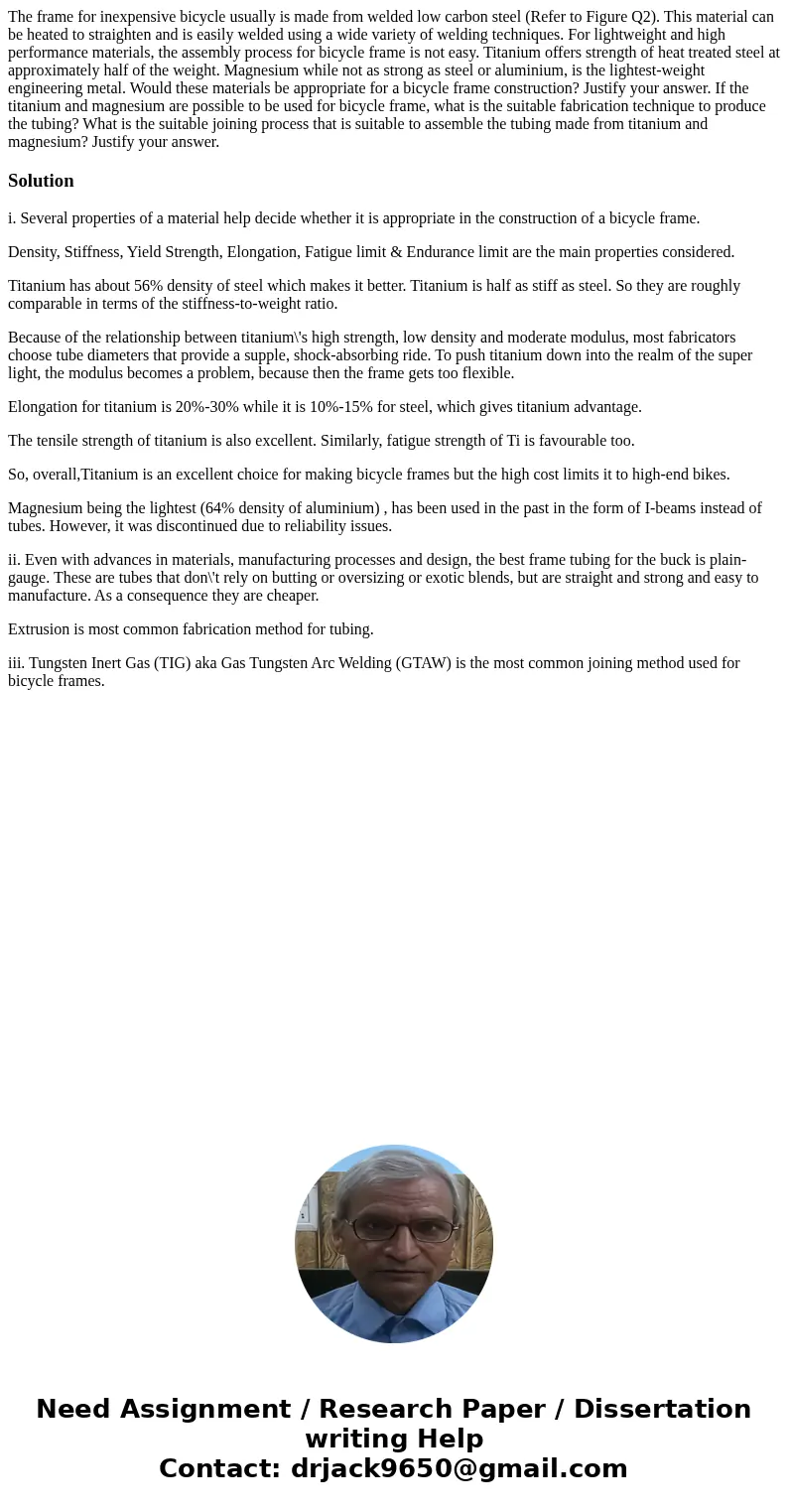The frame for inexpensive bicycle usually is made from welde
Solution
i. Several properties of a material help decide whether it is appropriate in the construction of a bicycle frame.
Density, Stiffness, Yield Strength, Elongation, Fatigue limit & Endurance limit are the main properties considered.
Titanium has about 56% density of steel which makes it better. Titanium is half as stiff as steel. So they are roughly comparable in terms of the stiffness-to-weight ratio.
Because of the relationship between titanium\'s high strength, low density and moderate modulus, most fabricators choose tube diameters that provide a supple, shock-absorbing ride. To push titanium down into the realm of the super light, the modulus becomes a problem, because then the frame gets too flexible.
Elongation for titanium is 20%-30% while it is 10%-15% for steel, which gives titanium advantage.
The tensile strength of titanium is also excellent. Similarly, fatigue strength of Ti is favourable too.
So, overall,Titanium is an excellent choice for making bicycle frames but the high cost limits it to high-end bikes.
Magnesium being the lightest (64% density of aluminium) , has been used in the past in the form of I-beams instead of tubes. However, it was discontinued due to reliability issues.
ii. Even with advances in materials, manufacturing processes and design, the best frame tubing for the buck is plain-gauge. These are tubes that don\'t rely on butting or oversizing or exotic blends, but are straight and strong and easy to manufacture. As a consequence they are cheaper.
Extrusion is most common fabrication method for tubing.
iii. Tungsten Inert Gas (TIG) aka Gas Tungsten Arc Welding (GTAW) is the most common joining method used for bicycle frames.

 Homework Sourse
Homework Sourse